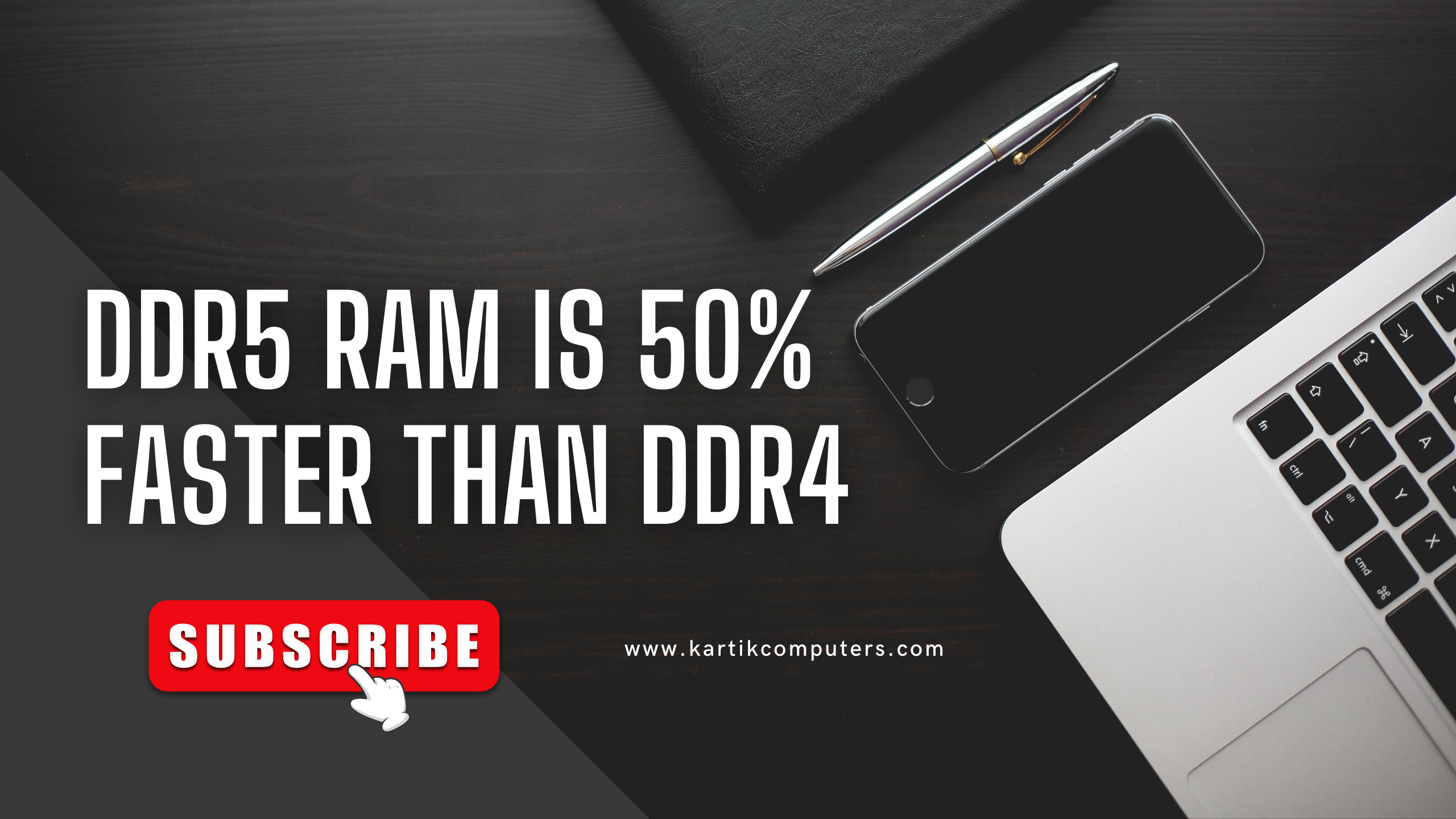DDR5 Ram is 50% Faster Than DDR4

DDR5 RAM is indeed expected to be significantly faster than DDR4 RAM. The “DDR” in DDR5 stands for “Double Data Rate,” indicating that it can transfer data at twice the speed of its predecessor. However, it is important to note that the actual performance increase may vary depending on various factors.
DDR5 RAM offers higher clock speeds, increased bandwidth, and improved data transfer rates compared to DDR4 RAM. It achieves this by utilizing new technologies and design enhancements. DDR5 RAM modules have more pins and higher densities, allowing for greater memory capacity and faster data access.
The increased speed of DDR5 RAM can lead to improved overall system performance, particularly in tasks that heavily rely on memory bandwidth, such as gaming, video editing, and data-intensive applications. It enables faster data transfers between the RAM and the processor, reducing latency and improving responsiveness.
Moreover, DDR5 RAM introduces new features like Error Correcting Code (ECC) for improved data integrity and reliability. It also supports higher memory densities, allowing for larger memory configurations in high-end systems.
While DDR5 RAM offers significant performance benefits, it’s important to note that its compatibility is limited to newer systems that are designed to support it. Existing systems using DDR4 RAM will not be able to upgrade to DDR5 without a motherboard and CPU that specifically support DDR5.
Here are some of the key advantages of DDR5 RAM
- Increased Speed: DDR5 RAM provides higher clock speeds and improved data transfer rates, allowing for faster and more efficient performance. The increased speed enables quicker data access and reduces latency, resulting in improved overall system responsiveness.
- Higher Bandwidth: DDR5 RAM offers greater memory bandwidth compared to DDR4 RAM. This increased bandwidth enables faster data transfers between the RAM and the processor, allowing for smoother multitasking, faster application loading times, and improved performance in memory-intensive tasks such as gaming, video editing, and data analysis.
- Improved Efficiency: DDR5 RAM introduces several architectural enhancements that improve power efficiency. It features a more advanced power management system that allows for better control over voltage and power consumption, leading to reduced energy usage and lower heat generation.
- Higher Density: DDR5 RAM supports higher memory densities, allowing for larger memory configurations in high-end systems. This means that systems equipped with DDR5 RAM can accommodate more memory, providing a significant boost in overall system performance, especially for memory-intensive applications and workloads.
- Error Correcting Code (ECC): DDR5 RAM includes built-in support for Error Correcting Code (ECC). ECC helps detect and correct errors that may occur during data transmission, enhancing data integrity and system stability. This feature is particularly beneficial in critical applications that require high reliability and accuracy, such as servers and workstations.
- Future-Proofing: As DDR5 RAM becomes the new standard, investing in DDR5-compatible systems ensures future compatibility and upgradability. DDR5 technology is expected to be supported by upcoming processors and motherboards, ensuring that users can take advantage of the latest advancements in memory technology.

